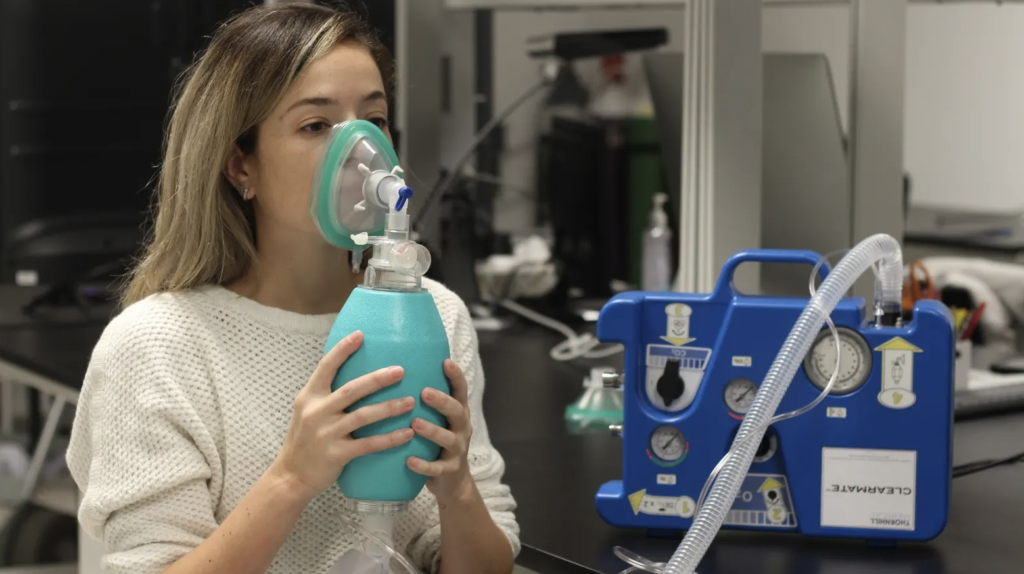Scientists in Canada say they’ve found a new way to treat potentially life-threatening alcohol intoxication—by helping people literally breathe out the alcohol in their system. Their device, which is designed to allow people to hyperventilate safely, was found to speed up the clearance of alcohol from healthy volunteers three times faster in a small pilot study.
Usually, toxins like alcohol are largely broken down by the liver. The liver can take a lot of punishment, but the rate that it metabolizes alcohol is constant, meaning you can’t speed up the process in times when the amount of alcohol in your body is enough to be fatal or seriously harmful. Most times, all doctors can do when someone is passed out is to make sure their breathing and body functions are stable until the liver can finish its job.
But the lungs also play a small role in naturally eliminating alcohol from our body, something that you’ve probably noticed if you’ve ever smelled booze on someone’s breath. This happens when blood saturated with alcohol reaches the lungs to be replenished with fresh oxygen. Some of the alcohol in the blood, along with carbon dioxide, is then exhaled.
This process can be sped up through hyperventilation, or the act of rapidly breathing. The trouble is, when we hyperventilate, we also lose too much carbon dioxide. To stop this from happening, our body has evolved to make us seriously uncomfortable or even lose consciousness when we hyperventilate for too long (this is why someone visibly panicking might faint).
According to study author and inventor Joseph Fisher, the device has found a way to interrupt this trigger while still keeping the person safe. The patient is outfitted with a gas mask, which connects to a supply of oxygen and carbon dioxide. The mixture of gases they breathe in causes them to hyperventilate, while the device then feeds them back enough carbon dioxide that the body doesn’t involuntarily freak out.
“With each breath, it is designed to allow the normal amount of carbon dioxide to escape and any excess is returned on the very next breath,” Fisher, an anesthesiologist and senior researcher at University Health Network in Toronto, said in an email.
To continue reading about Gizmodo, please click here.
Also on Coast to Coast
-
Desert Harvest’s Newest Product: Providing Gentle Relief to the Body
-
Episode 25 of Coast to Coast: Checking Out the Top Travel Destinations for Spring & the Pennzoil 400
-
Coast to Coast Checks Out the Best of Sprouts with Nutritionist Cara Harbstreet
-
Episode 24 of Coast to Coast: Oscars Excitement & the Best of Sprouts with Nutritionist Cara Harbstreet
-
Healthy Valentine’s Day Treats with Almond Breeze and Dietician Bonnie Taub-Dix
